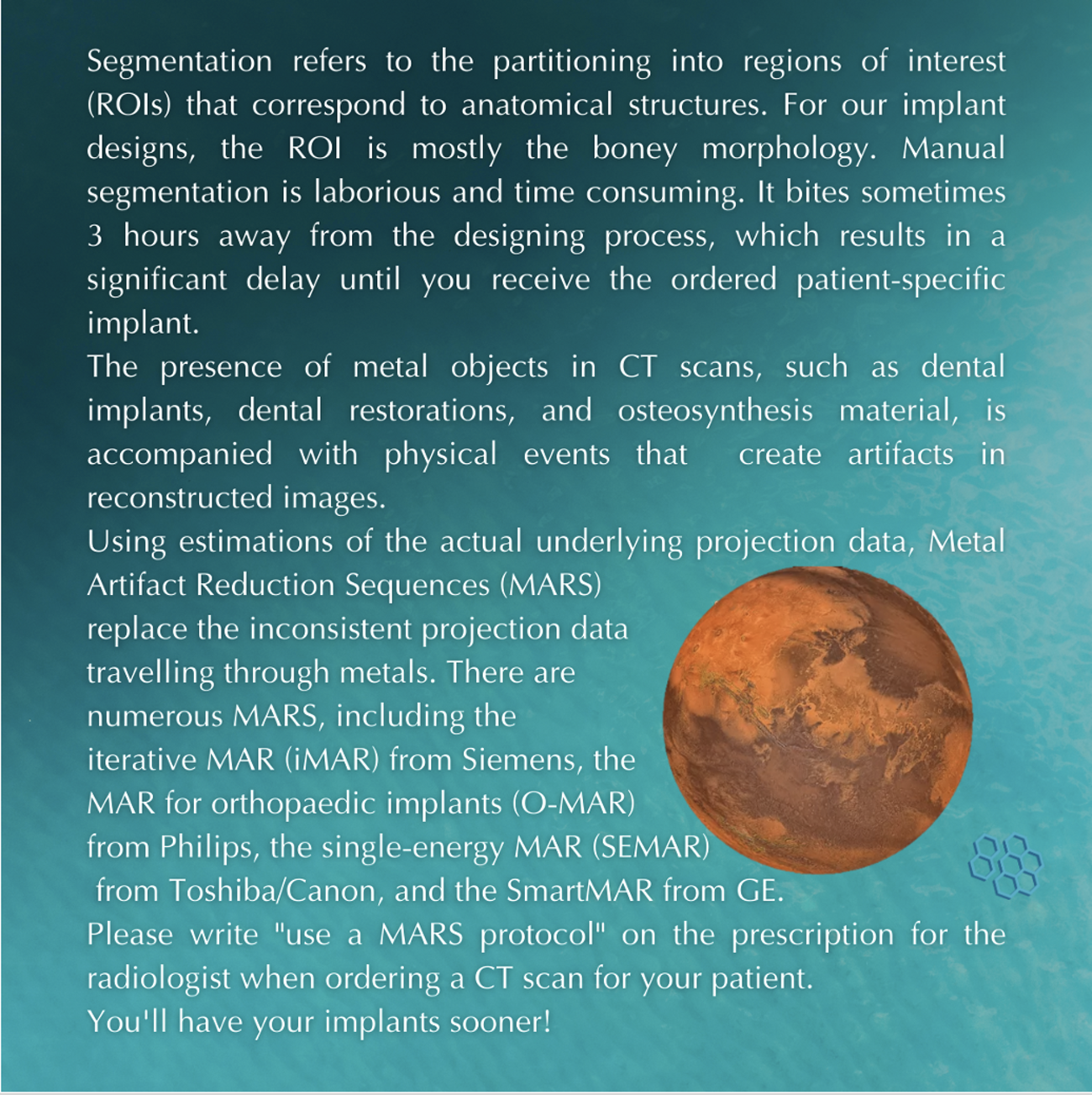
Segmentation refers to the partitioning of images into regions of interest (ROIs) that correspond to anatomical structures. For our implant designs, the ROI is mostly the boney morphology. Manual segmentation is laborious and time consuming. It bites sometimes 3 hours away from the designing process, which results in a significant delay until you receive the ordered patient-specific implant.
The presence of metal objects in CT scans, such as dental implants, dental restorations, and osteosynthesis material, is accompanied with physical events that create artifacts in reconstructed images. Beam hardening, photon starvation, and edge effect are only a few of the factors that lead to the formation of metal artefacts.
Using estimations of the actual underlying projection data, Metal Artifact Reduction Sequences (MARS) replace the inconsistent projection data travelling through metals.
There are numerous MARS, including the iterative MAR (iMAR) from Siemens, the MAR for orthopaedic implants (O-MAR) from Philips, the single-energy MAR (SEMAR) from Toshiba/Canon, and the SmartMAR from GE.
Please write "use a MARS protocol" on the prescription for the radiologist when ordering a CT scan for your patient. You'll have your implants sooner!
Check the prescription forms in "Guidelines, manuals, forms and publications"!
